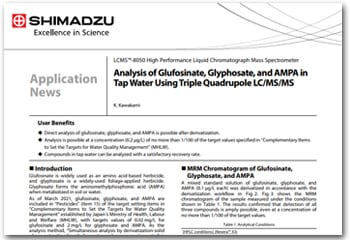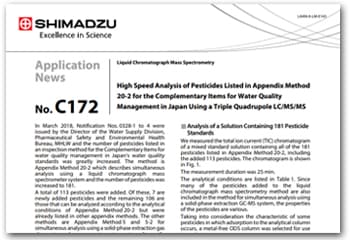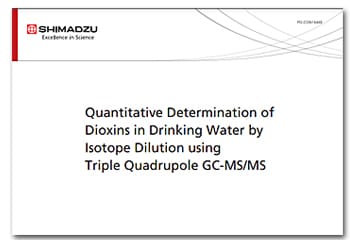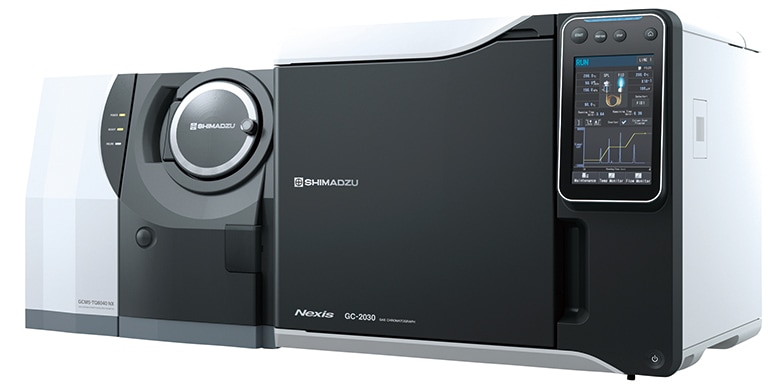The LCMS-8050 can be used in a wide range of fields for a variety of applications, such as quantitative analysis which requires high sensitivity, multicomponent simultaneous analysis, and screening.
POPs and Pesticides
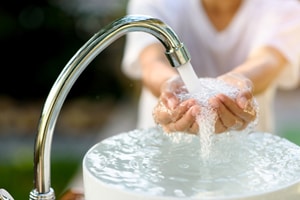
Each country has regulations that require testing the safety and condition of drinking water to provide safe water. Pesticides and persistent organic pollutants (POPs) are strictly regulated worldwide because they are compounds that tend to remain in the environment for a long time and can be harmful to humans. Accurate quantification of these substances is required at low concentrations. Microanalysis is possible using LC/MS/MS and GC/MS/MS systems.
Application News
LC-MS
Analysis of Glufosinate, Glyphosate, and AMPA in Tap Water Using Triple Quadrupole LC/MS/MS
Glufosinate is widely used as an amino acid-based herbicide, and glyphosate is a widely-used foliage-applied herbicide. Glyphosate forms the aminomethylphosphonic acid (AMPA) when metabolized in soil or water.
This article introduces an example of an analysis of glufosinate, glyphosate, and AMPA without concentration by solid-phase extraction (SPE) specified using a Shimadzu LCMS-8050. A satisfactory recovery rate was obtained for all three compounds at a concentration of 0.2 μg/L, which is 1/100 of the target value or less, confirming that highly precise analysis is possible.
High Speed Analysis of Pesticides Listed in Appendix Method 20-2 for the Complementary Items for Water Quality Management in Japan Using a Triple Quadrupole LC/MS/MS
This article introduces an example analysis in which the 181 pesticides are analyzed within a short time of 25 min. Also, based on the validation guidelines of the drinking water inspection method, the results of using the LCMS-8050 for evaluating 152 of the pesticides, are introduced as well.
GC-MS
Quantitative Determination of Dioxins in Drinking Water by Isotope Dilution using Triple Quadrupole GC-MS/MS
Polychlorinated dibenzodioxins (PCDDs) and polychlorinated dibenzofurans (PCDFs), generally termed as dioxins, are persistent organic pollutants. Their stabilities have been accumulating to environmental problems. In addition to the gas hromatograph coupled with high resolution mass spectrometry (GC-HRMS) system, EU regulation 589/2014 has included the use of tandem mass-spectrometry (GC-MS/MS) system as a conrmatory method for determination of dioxins in feed and food. This motivates the use of the inexpensive and user-friendly GC-MS/MS system to identify and quantify dioxins. In this study, we report a method developed with the cost-effective triple quadrupole GC-MS/MS system for high sensitivity detection and quantication of dioxins in water samples, as a proposed alternative to the EPA method 1613 with a change of detector.
Related Products
-
-
The Shimadzu triple-quad GCMS-TQ8040 NX features smart technologies to boost the efficiency of routine analytical work. For example, Smart MRM provides fully-automated MRM method development. It automatically determines all optimum transitions and collision energies, seamlessly incorporating them into the Smart Database Series.



